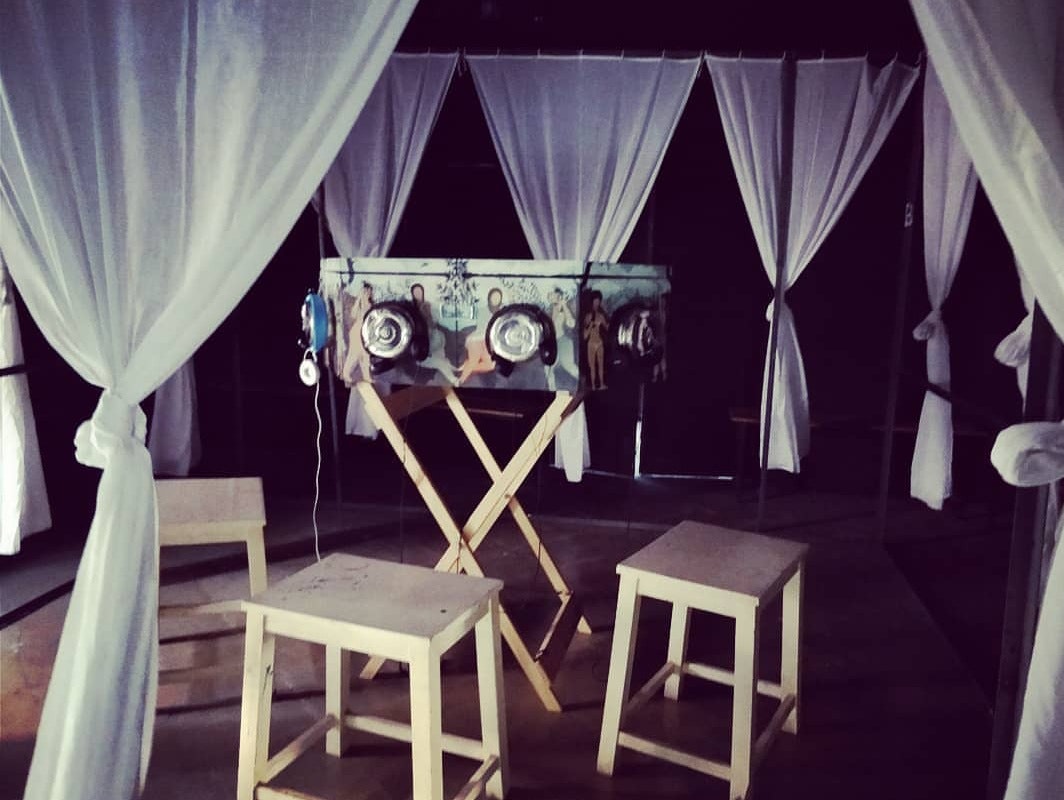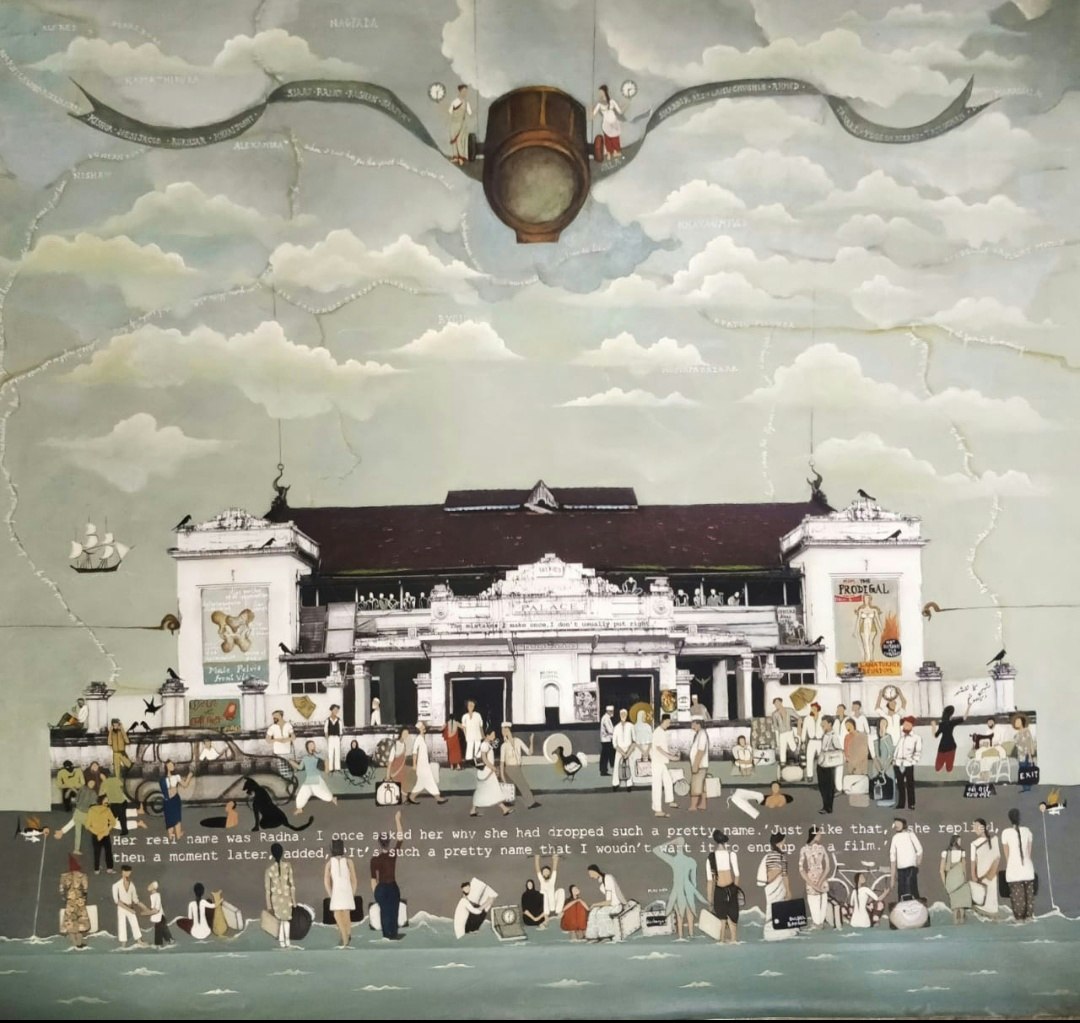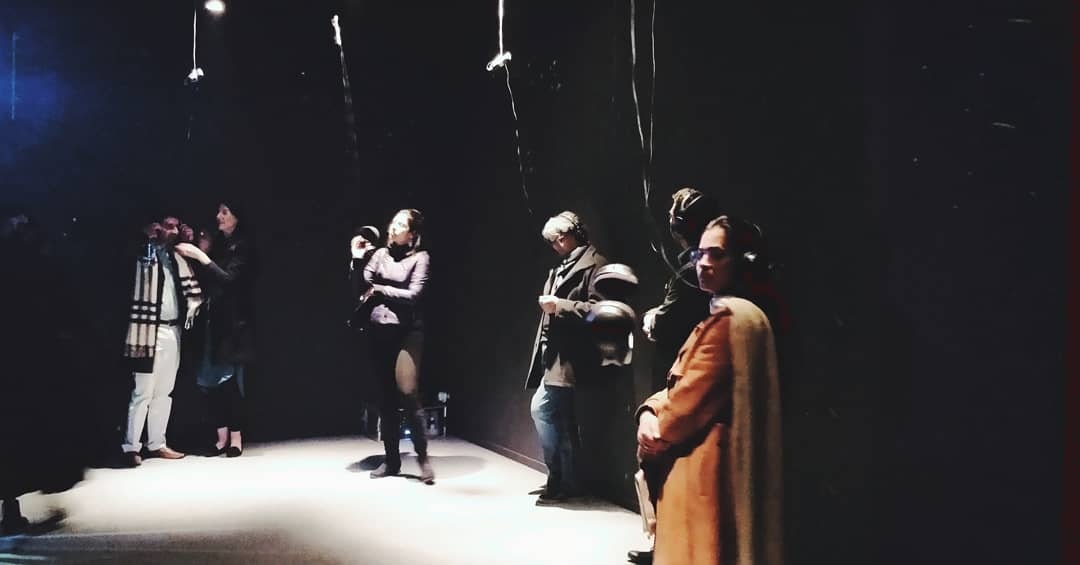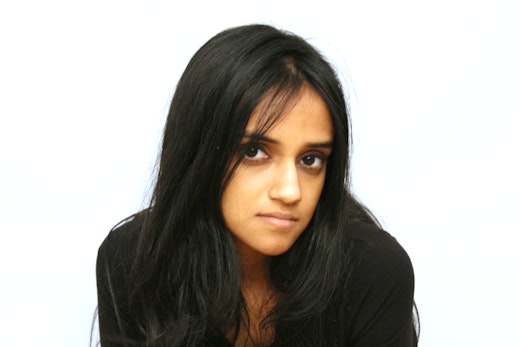Listening for change: Baaraan Ijlal’s practice of collecting stories
Anushka Rajendran

Image supplied.
I first encountered Baaraan Ijlal’s work on YouTube in 2018, rather than in an art gallery or museum. The work was Birdbox (2016), a project that recorded anonymous subjects’ gaze and verbal ruminations upon snippets of ‘high’ and ‘pop’ culture—from the Indus Valley’s prehistoric bronze sculpture of Dancing Girl (c. 2,500 BCE) to Bollywood films. What all of the visual source material, available in the public domain, had in common was its direct relationship with prescriptive ideas of femininity and transgressions from them. The video documentation of the project that I accessed opens with a burst of giggles from what sounded like young girls. The ensuing conversation confirmed my suspicion as the girls go on to describe their negotiations with morality and desire on seeing a self-portrait in the nude by Hungarian Indian modernist Amrita Sher Gil—’we see this in English films sometimes’—and also their own bodies and how they are expected to be dressed on viewing a clip from 1980s Bollywood, with its promiscuous clothing, coquettish song and dance—’sometimes when I see my friend at parties, even I feel like wearing clothes like this as well.’
The naivety of these conversations had tapped into something that frequently escapes the clutches of the often veiled discursiveness of academia, or the certainty of activist positions. I was a rapt listener, a fly on the wall to revealing conversations I would otherwise not be privy to. The anonymity of the voices allowed them to assume universality, yet their intimacy is compellingly specific, adding urgency to the provocation. Employed as both a practical and conceptual device in art, anonymity has the unique ability to instantly surpass the barriers of differential prejudices and presumptions, and force witnesses—be they viewers, listeners or participants—to confront the unqualified humanity of subjects at hand. Later, I discovered that Birdbox’s recordings were made with teenagers from diverse geographic contexts such as Bhopal, Kaarvi, Lucknow and Delhi. With this in mind, viewing the work again my experience is such that, even if for a brief period of time, the subjectivity of each voice collapses into the others, compelling one to see the world from their shared perspective without the ordinary bias that fills the space between us.
Far away from the sanctimonious censorship that dictates behaviour in the everyday, the young women of Birdbox were able to articulate (perhaps cathartically) their desire, pain and shame shaped by societal expectations through the cues presented in the work’s collage of material; their testimony received witness in the space of the work. In Ijlal’s practice this is consistently the role of art and the artist/artwork is merely the medium.
Anonymity has the unique ability to instantly surpass the barriers of differential prejudices and presumptions, and force witnesses—be they viewers, listeners or participants—to confront the unqualified humanity of subjects at hand.

Baaraan Ijlal, Birdbox (installation view), 2016, Conflictorium, Delhi Chakla, Ahmedabad, India, 18-30 April, 2018; courtesy the artist.
Over a year later, when I visited Ijlal’s home studio in Delhi, I discovered her paintings. As she showed me her ongoing series of canvases, which she had been working on for several years, I immediately recognised a narrative quality that was similar to that which I had admired in Birdbox. Each of Ijlal’s paintings are layered with testimonies and anecdotes that she collected around specific architectural spaces, ranging from Watson’s Hotel/Esplanade Mansion, Mumbai, to Chowringhee Square, Kolkata. Armed with secondary research on an extensive list of fragile, forgotten built forms that are not officially listed as regional monuments in India, she would collect on-site testimonies over several field trips that seek to establish histories of the buildings through the lived experiences of those who inhabit them and others who live in their vicinity. Each of Ijlal’s paintings are threaded with these stories, collected as a result of a gentle knock on a door, or by simply hanging out in its neighbourhood. Once the stories come pouring out, Ijlal starts by photographing the façade of the building, which then becomes a material and metaphorical surface upon which each subsequent visit to the site would inscribe a layer of stories in paint.
This body of work, Hostile Witness (2014–2019), started with the impending demolition of Ijlal’s ancestral home in Old Bhopal. She sees herself as a bearer of the inherited memory of two hundred years of history that had unfolded in that house, dating back to when her maternal great grandfather—from a family of Arabic scholars in Yemen—was invited to Bhopal by the Begum to be an educator of history for what his reading of Islamic texts would facilitate for a woman ruler. The house then went on to shelter the offices of Al Hilal, a weekly Urdu newspaper founded in 1912 that provided impetus to the Independence movement against colonial rule until its operations were shut down by the British government in 1914. Later, the house would shelter members of the Progressive Writers’ Association during the Emergency period (1975–1977) (1), and eventually she and her own family as they sought refuge during the riots in 1992, when their community feared persecution. Personal histories always carry with them traces of the politics that have unfolded over time, especially the ways by which political events—both landmark and forgotten—touched and shaped lives intimately. In this sense, Hostile Witness evolved into a testament of all that the house had been witness to.

Baaraan Ijlal, Hostile Witness, 2018, Bycullah, Bombay/Mumbai; courtesy the artist.
It is significant that Ijlal started working on Hostile Witness in 2014, the same year that marked the stark rise of authoritarian nationalism and communalism in India. This political paradigm shift has ensured that more than ever before those that exist on the fringes of the political spectrum are being pushed further from mainstream discourse. Ijlal’s interest in bringing precarious voices that are otherwise not ordained a political stage into conversation within the space of her practice took a turn that was even more suited to the ongoing political climate in the subsequent project, Change Room (2018–). Perhaps the most ambitious work initiated by Ijlal to date, Change Room started with a simple idea: ‘There cannot be a monopoly on sound.’ Sound is an egalitarian, unlimited resource that is given to you from the moment you discover your own voice at birth. It ought to belong to everyone however they choose to use it. But power can determine who is heard.
Change Room, a project that Ijlal hopes to prolong for as long as she is able to continue working as an artist, is an effort to subvert the limits imposed on listening towards possible change. It all started one winter night, while working late in her studio when the artist heard loud screams outside her window. She went downstairs to look for the source of the deranged cries of anguish and anger to find no one. She kept listening to realise that this was the voice of a recently homeless woman camping in a nearby park with her bags and baggage. She only desired an audience for her story and decided to scream through the fog that enveloped her to the entire neighbourhood. Soon after, during a residency at the Conflictorium—located in Old Ahmedabad, an epicentre of the recurrent communal riots in the country, including those of 1992 during which the artist herself had felt targeted in Bhopal—the first edition of Change Room took form. In a fog-filled room, the visitors to the exhibition could hear testimonies from the local community recorded by the artist; those that had specific references to the conflict they experienced and others more personal and abstract. The audience could in turn leave their own testimonies and responses as a recording, which would become part of subsequent editions of the work if they desired it.
Sound is an egalitarian, unlimited resource that is given to you from the moment you discover your own voice at birth. It ought to belong to everyone however they choose to use it. But power can determine who is heard.

Baaraan Ijlal, Change Room, 2018, presented by Prameya Art Foundation at India Art Fair, New Delhi, January 2019; courtesy the artist.
Since then, Change Room has grown to around 250 recordings from various communities around India that are rooted in fragility, and also Dalit rights workers, transgender activists and sex workers in Nepal, and marginalised communities in Sri Lanka. Recordings are due in Bangladesh and Egypt, and she intends to return to Japan for more recordings. Such extensive travel has resulted in the rest of Ijlal’s practice taking a back seat. She will learn to divide her time between the studio and fieldwork soon, she says. Though she works with multiple media frequently, painting is too much a part of who she is, and it will continue to grow in her practice.
She is frequently in touch with grass root organisations that work with specific demographics, including sex workers, hijras, HIV survivors, displaced migrants from Afghanistan and the rest of South Asia, victims of the Bhopal gas disaster and ousted forest dwellers, as part of her research for Change Room. Often, these NGOs are happy to invite Ijlal to their context, and facilitate recordings, as they too want the stories to reach a sensitive audience. Collaborating with committed local institutions in each context ensures that there is follow up to the conversation that takes place and sustainability for the efforts that alleviate the conditions of those who leave their testimonies with the artist. She approaches each of the subjects of Change Room with the introduction that she is willing to listen to anything they have to say, for as long as they would like to speak, and will ask no questions. She does not insist on knowing their names and promises them complete anonymity—the anonymity that a blanket of fog had lent the homeless woman in that park in Delhi. If they do not desire to become part of the public archive that Change Room is becoming, she will ensure that the recording isn’t made public but will still listen to what they have to say. But frequently, they are eager to get their voices out there in the hope that it can help someone else who might be going through similar situations.
The transformative act of speaking to a witness, the artist in this case, and the future audience of Change Room, fits with studies on trauma that indicate that testimony and healing are closely connected. Baaraan Ijlal makes it available for whom the contiguities that enable such possibilities are far and few. It is also transformative for her audience, as they listen to unimaginable stories, intense emotion, and realities that do not fall under the radar of media.
Notes
(1) A state of emergency was declared across India by Prime Minister Indira Gandhi, which involved suspending democratic elections, curbing civil freedoms and was accompanied by various human rights violations.
About the contributor
Anushka Rajendran is a curator and art writer primarily based in New Delhi. She is the curator for Prameya Art Foundation (PRAF), a not-for-profit arts organisation.
